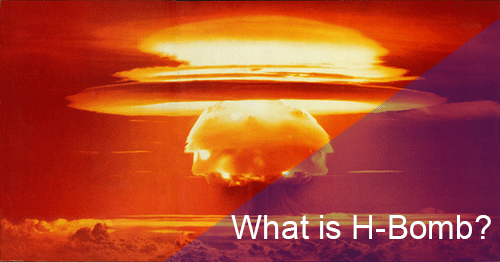
The announcement from North Korea that it had carried out a nuclear test brought to the frontlines of global attention a phrase not often heard since the Cold War “the H-bomb”.
North Korea’s first three nuclear tests, from 2006 to 2013, were A-bombs on roughly the same scale as the ones used on Hiroshima and Nagasaki, which together killed more than 200,000 people. Pyongyang announced that it had detonated its first H-bomb; while seismic data supported the claim of a large explosion, there was no immediate way to confirm the type.
What is Hydrogen Bomb?
Fusion is the main principle behind the hydrogen bomb, which can be hundreds of times more powerful than atomic bombs that use fission. In a hydrogen bomb, radiation from a nuclear fission explosion sets off a fusion reaction responsible for a powerful blast and radioactivity.
Difference between Atomic Bomb and Hydrogen Bomb
Atomic bombs rely on fission, or atom-splitting, just as nuclear power plants do. The hydrogen bomb, also called the thermonuclear bomb, uses fusion, or atomic nuclei coming together, to produce explosive energy. Stars including Sun also produce energy through fusion.
The H-bomb requires more technology in control and accuracy because of the greater amount of energy involved. Both the A-bomb and H-bomb use radioactive material like uranium and plutonium for the explosive material.
As opposed to the atomic bomb, the kind dropped on Japan in the closing days of World War II, the hydrogen bomb, or so-called “superbomb” can be far more powerful, by 1,000 times or more.
History of H Bomb
The hydrogen bomb was never dropped on any targets. It was first successfully tested in the 1950s by the U.S., in bombs called Mike and Bravo. Soviet tests soon followed.
The technology of the hydrogen bomb is more sophisticated, and once attained, it is a greater threat. They can be made small enough to fit on a head of an intercontinental missile.
The hydrogen bomb is in fact already the global standard for the five nations with the greatest nuclear capabilities � the U.S., Russia, France, the U.K. and China. Other nations may also either have it or may be working on it, despite a worldwide effort to contain such proliferation.
Current Affairs: 6th January, 2016 Current Affairs Round up December, 2015.

Join The Discussion